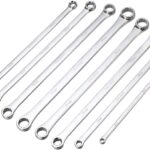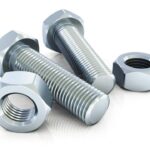Heat exchangers are the devices which are used to exchange heat between two or more fluids which are at different temperature. Heat exchangers are major devices used in engineering field and have vast application in engineering processes like in refrigeration and air conditioning system, food processing system, powder plants, chemical reactors and aeronautical applications. Heat exchangers are used for heating and cooling both purposes by transferring heat from one fluid to another. The heat exchangers are classified in different categories and we use different heat exchanger at different application as per our requirement. Many factors are involved in the selection of heat exchangers like size, structural strength, capacity, weight, pressure drop and cost. The heat exchange process in heat exchangers can be done by the principles of conduction, convection, radiation and evaporation or condensation. For better understanding we can classify different type of heat exchangers in some categories which are as follow.
FLOW OF FLUID:
Before study the type of heat exchangers we should have proper knowledge of the type of flow used in heat exchangers, because different types of flows are used in heat exchangers according to our requirement. These flows are parallel flow, counter flow and cross flow. In these three types of flow the relative direction of hot and cold fluid changes only. The fluids may be separated by a plane wall or by concentric tube called as double pipe.
- PARALLEL FLOW:
If both the fluids i.e. hot and cold fluid enters into the heat exchangers at same end and then travels parallel to each other till the outer end i.e. both fluid moves in same direction then it is known as parallel flow. - COUNTER FLOW:
When both the fluid enters into the heat exchangers at opposite direction but also moves parallel to each other then it is known as counter flow. - CROSS FLOW:
In this flow both the fluids moves at right angle to each other through the heat exchanger.
- PARALLEL FLOW:
For better efficiency the heat exchangers are defines to maximize the surface area of contact between two fluids and minimize the flow resistance. From above three cases counter flow heat exchangers is most efficient among all these because it can transfer high amount of heat and it has higher temperature difference along its unit length.
The different types of heat exchangers are classified in three main categories.
- Direct Transfer type Heat Exchanger
- Direct Contact type Heat Exchanger
- Regenerative or Storage type of Heat Exchanger
A.) Direct Transfer type Heat Exchanger:
These are also known as recuperators heat exchangers. In which the fluids are separated by a wall i.e. both hot and cold fluid do not come into contact with each other. The wall can be a simple wall or tube or some complex structure like fins and baffles. Surface heat exchangers are more commonly used name of these heat exchangers they can be constructed with large heat transfer surfaces in a relatively small volume and are suitable for heating, cooling, evaporating and condensing applications. The heat exchangers come in these categories are
- Surface Condenser
- Economizer
- Oil Cooler
- Air Preheater
- Shell and Tube Heat Exchanger
- Plate Heat Exchanger
- Plate and Shell Heat Exchanger
- Plate Fin Heat Exchanger
- Dynamic Scraped Surface Heat Exchanger
- Pillow plate heat exchanger
SURFACE CONDENSER:
Surface condenser is a type of heat exchanger mostly used in thermal power stations. These are water cooled condensers and installed at the exit of the steam from steam turbine. It converts steam from its vapor form to its liquid state at a pressure lower than atmosphere pressure. Where cooling tower can’t install we prefer surface condenser on that place. Sometime air also use as cooling fluid when watersupply is not sufficient, but air cooled condenser are not so efficient because they cannot achieve desired steam pressure and temperature at outlet. Surface condensers have various applications in different industries also where single fluid is recirculates again and again by condensing and heating it.

ECONOMIZER:
It is a mechanical device used to reduce the energy consumption by preheating of the fluid before entering into the boilers. It is a type of heat exchanger which is mostly used in boilers, power plant and refrigeration and air conditioning. In all these devices economizer may have different in construction but the basic function is same. Economizer consists of several tubes in which one fluid is passing over the tubes. In case of steam boilers cooled fluid i.e. water goes through these tubes before entering into the boiler and hot flue gases which are released through the chimney flows over these tubes due to this the temperature of the inlet water increases slightly before boiling. Due to economizer we can save fuel consumption and economize our process by using waste heat.

OIL COOLER:
Oil cooler is another type of heat exchanger in which high temperature oil is cooled by using some coolant. Mainly water is used as cooling fluid due to easy availability. This is mostly a double pipe arrangement. In which both hot and cold fluid pass simultaneously. It is most simple and easily operated heat exchanger. The flow can be parallel or may be counter as per the requirement. One fluid enters through inner pipe and second one is through outer pipe. As the oil flows through one pipe the water flows through second pipe this process continuously repeated.
AIR PREHEATER:
As name suggest air preheater use to pre heat the air before further use to increase the thermal efficiency of the device. It is a type of heat exchanger. The heat lost from by the flue gas use to pre heat the air before entering into the boiler in case of thermal power plant. The air preheater heat exchanger is installed between the economizer and chimney. This is a tubular structure. The cold fresh air passing through tubes and hot flue gases pass over these tubes and exchange heat to warm the inside cold air before entering into the boiler.

SHELL AND TUBE HEAT EXCHANGER:
Shell and Tube heat exchanger is used for high pressure applications. It works normally at 30 bar pressure and temperature greater than 260oC. It has durable structure to sustain the high load and at high pressure. It consists of number of tubes which are arranged longitudinally in the shell. One fluid is passing through these tubes and the other fluid passing over them through shell opening. All the tubes are connected to one inlet and one outlet through which first fluid is pass, this can be hot or cold. The second is passing over these tubes, baffles are provided inside the shell to maximize the contact of second fluid (which flows inside the shell) with tubes. The shell and tube have various shapes and design but the basic function of all types are common. The tube diameter should be within proper limit not too small not too large, because small diameter tubes have difficulty in cleaning of fouling but small tubes make heat exchanger economical and compact. The baffles used in shell direct the fluid flow across the tubes. They also prevent the tubes from vibrating. Different designs of baffles are used as per requirements. Baffles provide turbulence in the fluid flow inside the shell which results in higher heat transfer coefficient for the outer tubes surface.

PLATE HEAT EXCHANGERS:
This is the type of heat exchanger. This consists of thin plates having equal cross-sectional area. These plates are separated by a very small distance. The surface area of these plates is quite large because large surface area dominates large heat transfer through these tubes. These plates are manufactured by using gasket and brazing and made up of stainless steel. Due to large surface area of plates this heat exchanger is more effective as compare to shell and tube heat exchanger and it is mostly used in the refrigeration applications. Gasket directs the streams between alternate plates and prevents external leakage. Gaskets are arranged for each stream to slow between alternate plates. The corners of all the plates have an opening for the passing of fluid, for extraction of heat from the plates when fluid flows through it. This is done generally in periodic manner as per the requirement.

PLATE AND SHELL HEAT EXCANGER:
It is combination of both plates with both shell and tubes heat exchangers. Plates are mounted in a shell. A series of plates are joining together for better heat transfer. These plates are made up of stainless steel of some high quality materials. These plates are hanged vertically in shell. These plates are corrugated to give points of support for increasing heat transfer. The plates used are circular in cross-section and welded together to fit in the shell. This technology offers high heat transfer at high temperature and pressure. Gaskets are used here; this is the main advantage of plate and shell heat exchanger because it provides a security against leakage at high pressure and temperature. The full pack of plates assembled into an outer shell that creates a secondary flow path through shell side.
PLATE FIN HEAT EXCHANGER:
This heat exchanger consists of a pack of fines which are arranged in straight, offset and in wavy form to increase the effectiveness of the device. The flow can be cross flow or counter flow as per our requirements. For better heat transfer the plate and fin heat exchanger is made up of aluminum alloys. Aluminum alloys reduce the weight of whole unit. It is used in low temperature application like natural gas, helium, oxygen and transport industries such as motors and aircraft engines. It has high heat transfer efficiency due to the large heat transfer area of fines and easily withstand at high pressure. Sometimes clogging occurs because the pathway is very narrow and cleaning of this clogging is quite difficult.
DYNAMIC SCRAPED SURFACE HEAT EXCHANGER:
This is another type of heat exchanger and it is different from above discuss cases. This is mostly used for heating and cooling of high viscosity fluids, crystallization process, evaporation and high fouling applications. It can be work for long run due to the continuous scraping of the surface. This avoids fouling and helps to obtain a sustainable heat transfer rate during the whole process.

PILLOW PLATE HEAT EXCHANGER:
Pillow plate is made up of a thin sheet of metal spot welding to the surface of another sheet of metal which is thicker than first one. The thin plate is welded in a regular pattern of dots. After welding the enclosed space is pressurized with some external force to cause the thin metal to bulge out around the welds and provides a space for heat exchanger liquid to flow. This looks like a swelled pillow formed out of metal. It is most commonly used in the dairy industry for cooling of milk in large direct expansion stainless steel bulk tanks.
B.) DIRECT CONTACT TYPE HEAT EXCHNAGER:
In direct contact type heat exchanger both hot fluid and cold fluid physically mix up with each other and exchange heat between them i.e. both the fluids comes in contact with each other for heat exchange. Following are the types of direct contact type heat exchanger.
- Cooling tower
- Jet condenser
- Fluid heat exchangers
COOLING TOWER:
Cooling tower is a type of heat exchanger in which hot fluid is cooled by the water spray. In this both hot and cold fluid comes in contact and mixed up to exchange heat. Cooling tower is type of heat rejection device that rejects the heat to the atmosphere though the cooling of water stream to a lower temperature. Cooling tower use evaporation process to remove heat from the hot fluid (water) and cool it at wet bulb temperature or some time Air is used for cooling of water at dry bulb temperature. The cooling tower may have natural draft or induced draft depends upon the operating conditions. Cooling tower is used cool the large amount of water so it recalculate again for cyclic operation. Cooling towers are used in many industries like thermal power station, chemical industries, refineries etc

JET CONDENSER:
Jet condenser is a type of direct contact of fluid. In which both hot and cold fluid mix together to exchange heat. In jet condenser the cooling water is sprayed on the exhaust steam though a jet which is comes out from the turbine due to this a direct contact of steam and cooling water is happen and both mixed up. Then steam start condensing, this condensation speed is very fast. The condensate then cannot be reused as feed water to the boilers. The temperature of the condensate is same as that of the cooling water leaving the condenser. Due to more intimate mixing of steam and cooling water jet condenser requires less quantity of cooling water for the condensation of steam. Generally the jet condensers require less floor area due to this they are cheaper than any other type of condensing method. Despite these advantages jet condensers are not usual in thermal power plants especially due to the loss of condensate.

FLUID HEAT EXCHANGER:
This is a type of heat exchanger in which gas is passing upwards through a shower of fluid, and the fluid is then taken elsewhere before being cooled. In this both fluid and water get mix to exchange heat and comes in direct contact. Water is used mostly as fluid. This is commonly used for cooling of gases and as well as it also removing certain impurities. So it does two works at a same time and solves two problems at once. It is widely used in espresso machines as an energy-saving method of cooling super-heated water to use in the extraction of espresso.
C.) REGENERATIVE OR STORAGE TYPE HEAT EXCHANGER:
When flow of fluid is periodic then it is known as regenerative type heat exchangers. In this type the same space is occupied by the hot and cold fluid between which heat is exchanged. This heat exchanger has application in preheating for steam power plants, blast furnaces and oxygen producers etc. Following are the heat exchangers which come in the category.
- Rotating matrix type of regenerative heat exchanger
- Adiabatic wheel heat exchanger
ROTATINNG MATRIX TYPE OF REGERATIVE HEAT EXHCANGER:
In this heat exchanger a rotating matrix is used. One side of this matrix cold fluid is flowing and the other side is hot fluid. For exchanging heat this matrix rotates and cold and hot side change their position but the flow or fluid remains same due to this the hot side becomes cool by the cold fluid and cold side gain heat by the hot fluid. This process continuously repeated. Continuity of fluid flow can be maintained since no need of stopping and restarting the fluid flows. This type of heat exchanger is used in the gas turbine power plants.

ADIABATIC WHEEL HEAT EXCHANGER:
In this type of heat exchanger an intermediate liquid or solid stores/hold the heat which is then moved to the other side of the heat exchanger to release this stored heat and becomes cool. Then the wheel again rotates to gain further heat then release it to other side. This process continuously repeated. This heat exchanger consists of a large wheel with fine threads rotating though the hot and cold fluids.

This is all about different types of heat exchangers used for cooling of heating puropose. If you have any query regarding this article, ask by commenting. If you like this article, don’t forget to share it on social networks. Subscribe our website for more informative articles. Thanks for reading it.







